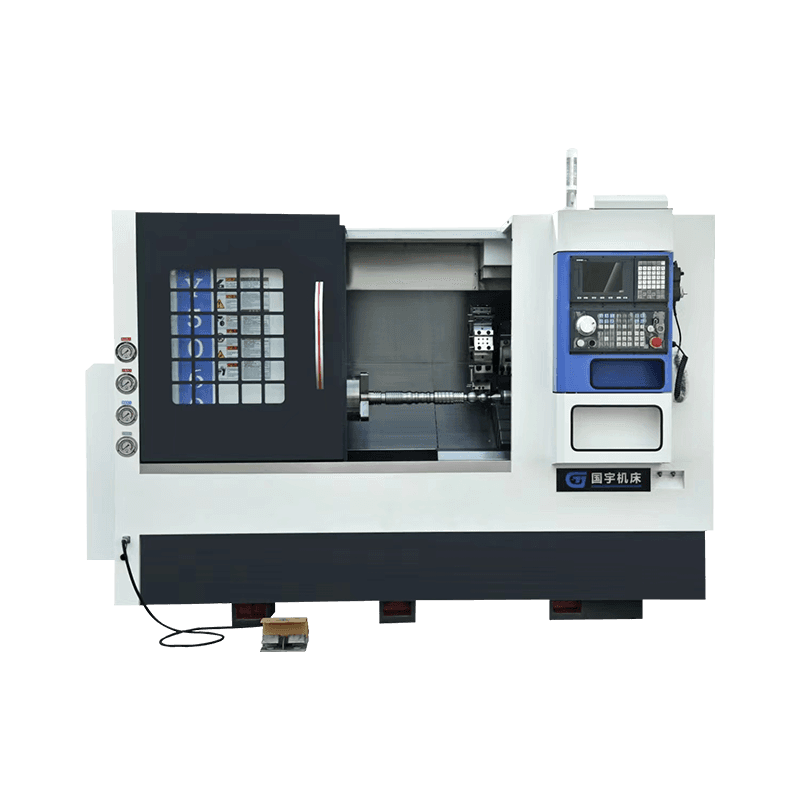Technical Characteristics: It can cut all kinds of turning surfaces by bicycle, such as conical surf...
See Details
Mini CNC wood lathe machines have become increasingly popular among woodworkers, hobbyists, and small-scale manufacturers. These machines offer precision, automation, and versatility in shaping wood products with minimal manual effort. However, like any advanced equipment, they require proper handling and operation. Incorrect use of a mini CNC wood lathe machine can a variety of problems, ranging from minor quality issues to significant safety hazards and equipment damage.

A mini CNC wood lathe is a compact, computer-controlled machine designed to rotate wood pieces at variable speeds while cutting tools shape the material. Its CNC (Computer Numerical Control) system allows for precise, repeatable cuts based on programmed instructions. This automation significantly enhances accuracy and productivity compared to manual lathes.
However, the complexity of CNC technology means that incorrect operation, such as improper setup, programming errors, or neglecting safety protocols, can have unintended effects.
Potential Consequences of Incorrect Operation
1. Damage to the Machine
Operating a mini CNC wood lathe without proper knowledge or preparation can result in physical damage to the machine's components. For example, setting incorrect spindle speeds or feed rates can overload the motor or bearings, causing overheating or premature wear.
Incorrect tool selection or poor tool alignment may excessive vibration or collision between the tool and the workpiece. Such collisions can damage the tool holder, cutting tools, or even the lathe's structural parts, costly repairs.
2. Poor Workpiece Quality
One of the primary goals of using a CNC lathe is achieving consistent, high-quality finishes. Errors in programming, such as incorrect tool paths or improper depth of cut, can produce defects like rough surfaces, uneven dimensions, or incomplete shaping.
Additionally, inadequate workpiece securing or incorrect material selection can cause shifting or deformation during operation. This not only wastes material but may require extensive rework, reducing productivity and increasing costs.
3. Safety Hazards
Improper operation can pose serious risks to operators. For instance, failing to follow safety protocols like using protective guards or wearing appropriate gear increases the chance of injury from flying debris or accidental contact with moving parts.
Programming mistakes that cause unexpected tool movements or collisions can also endanger nearby personnel. Furthermore, neglecting regular maintenance and inspections can result in mechanical failures, which may cause sudden machine stoppages or hazardous situations.
4. Increased Downtime and Maintenance Costs
Mistakes during operation often unplanned downtime as machines require inspection, adjustment, or repair. This disrupts production schedules and can affect delivery commitments.
Frequent incorrect use accelerates wear on components such as belts, motors, and bearings, shortening their lifespan and increasing replacement frequency. Over time, maintenance and repair expenses can rise significantly.
5. Software and Programming Issues
Mini CNC lathes rely heavily on accurate programming. Incorrect input of design files or failure to simulate tool paths can cause machining errors or machine faults.
Moreover, neglecting software updates or using incompatible programs may result in system crashes or erratic behavior, affecting both machine operation and output quality.
Common Causes of Incorrect Operation
Lack of Training: Operators without adequate training or experience may struggle with machine setup, programming, or troubleshooting.
Neglecting Safety Procedures: Skipping safety checks or ignoring protective measures can accidents.
Inadequate Maintenance: Poor maintenance routines reduce machine reliability and precision.
Overloading the Machine: Attempting to work with materials beyond the machine's capacity strains components.
Ignoring Manufacturer Guidelines: Failure to follow operational manuals and recommendations increases error risks.
Our team of digital and business experts will guide you to the right direction.
Let's Talk